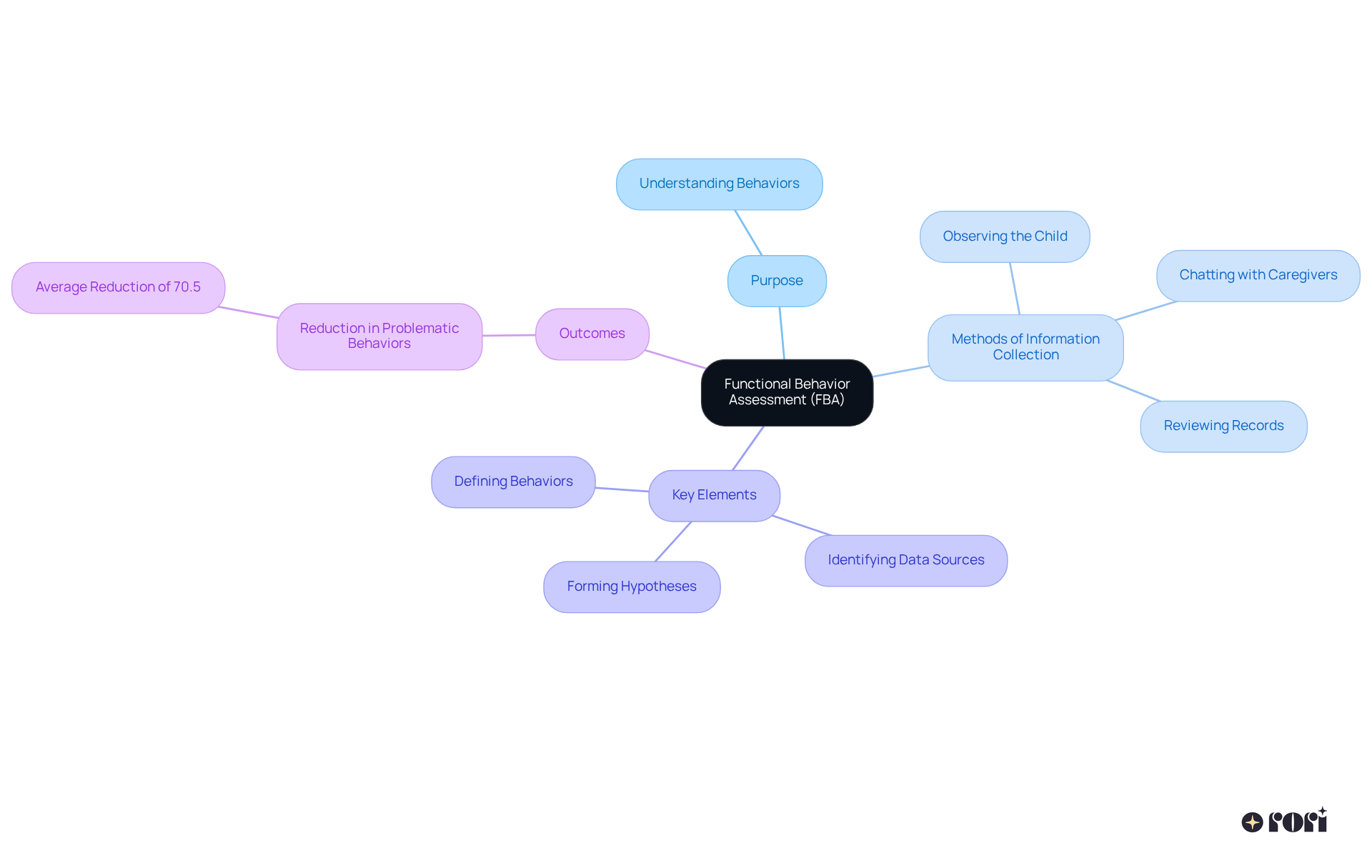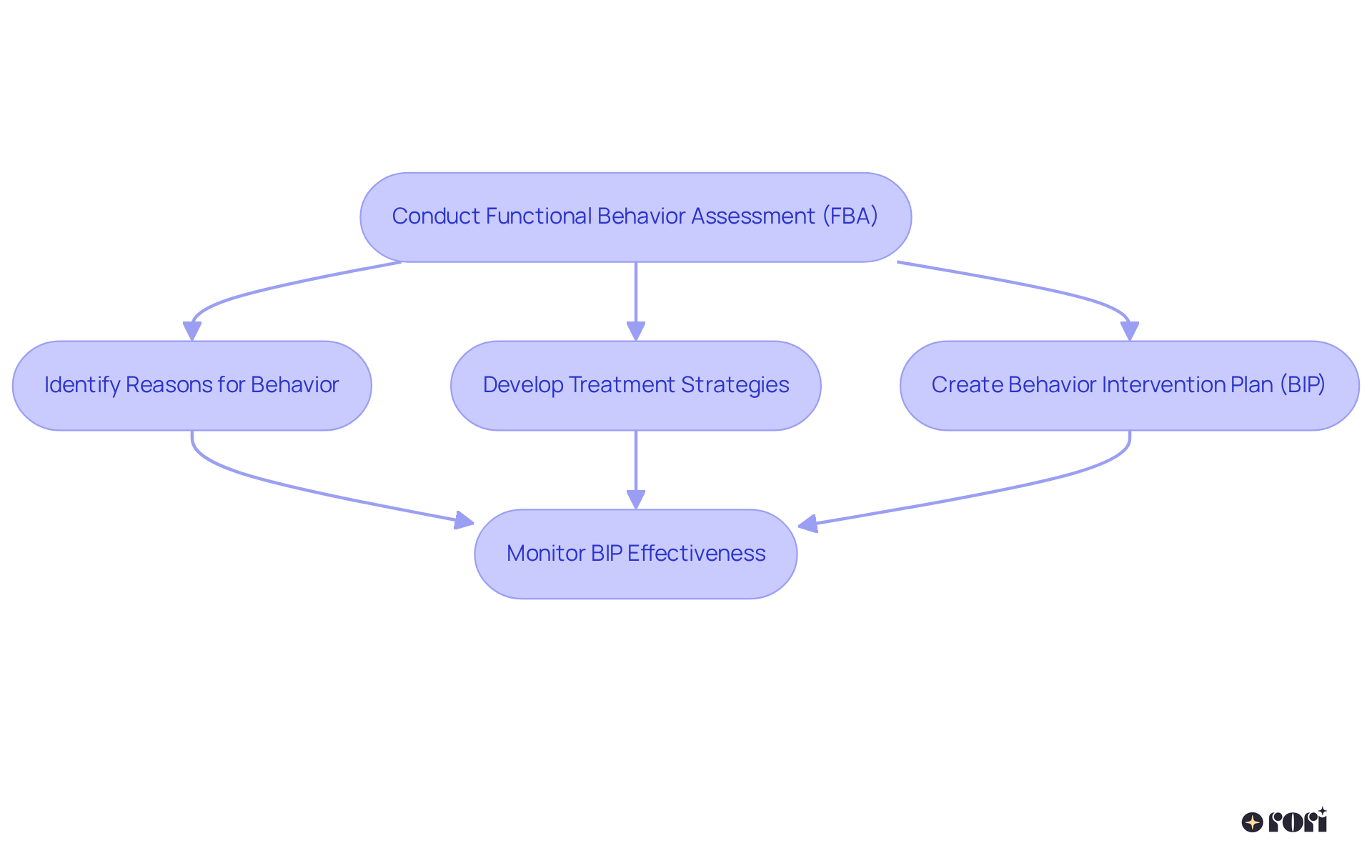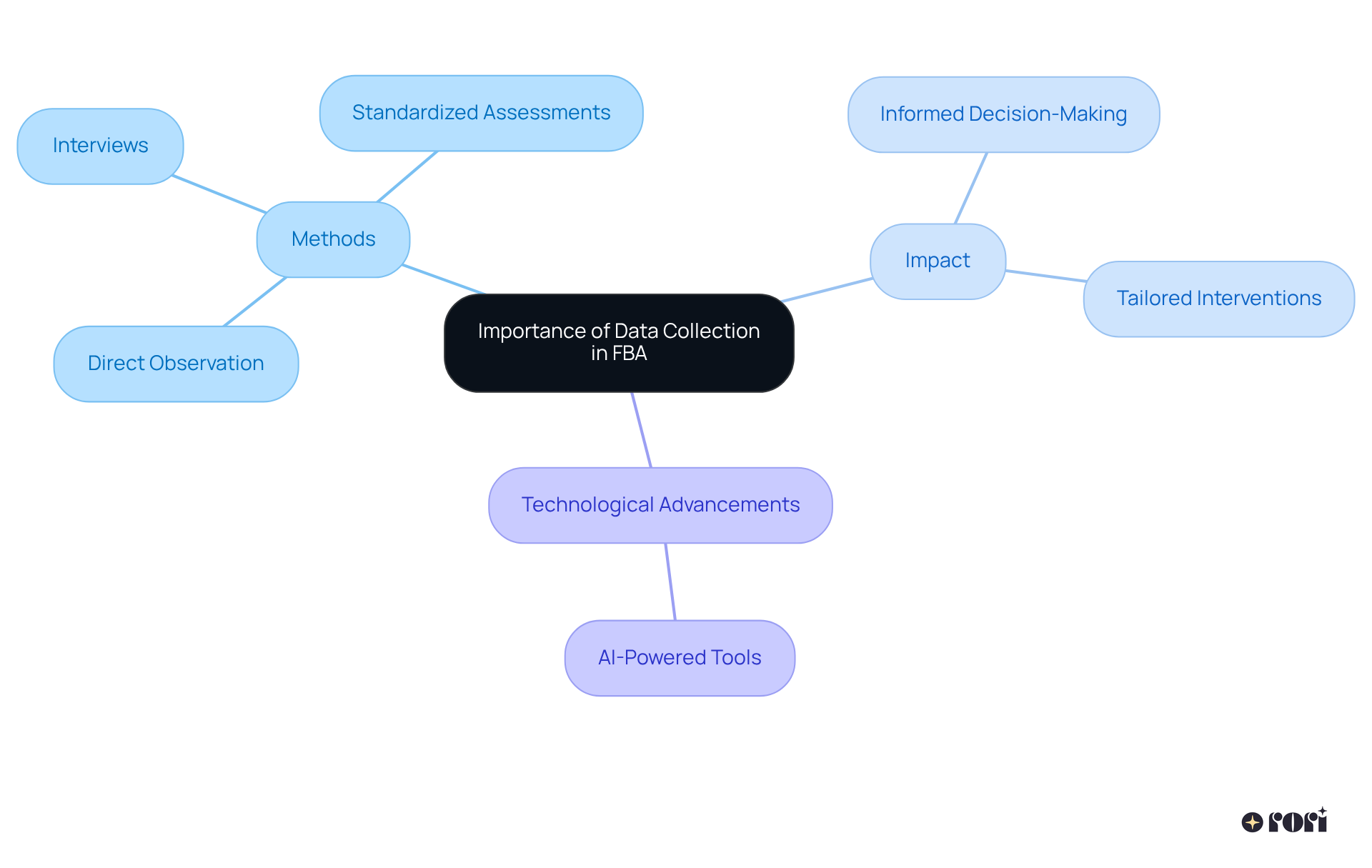Have you ever wondered why some children display challenging behaviors? The purpose of a Functional Behavior Assessment (FBA) in behavior analysis is to uncover the underlying reasons for these behaviors. This understanding is crucial as it allows us to create effective and personalized intervention strategies tailored to each child's needs.
In this article, we delve into the FBA process, which involves gathering data from various sources and analyzing behavioral patterns. This approach helps inform the development of tailored Behavior Intervention Plans (BIPs). These plans can make a significant difference in improving youth behavior.
Let’s explore this together! By understanding the FBA process, you can feel empowered to support your child better. Remember, you’re not alone in this journey—we’re here to help you every step of the way!
Understanding the complexities of children's behavior can often feel like navigating a maze without a map. But don't worry! Functional Behavior Assessments (FBAs) are here to illuminate the path, offering critical insights into the reasons behind those challenging behaviors. 🌟 In this article, we'll explore the purpose of conducting an FBA. Not only do they identify the functions of behaviors, but they also inform effective intervention strategies tailored just for your child's unique needs.
So, what happens when these assessments are overlooked? And how can they truly transform our approach to behavior analysis? Let’s dive in together and find out! We’re here to help you every step of the way!
A Functional Behavior Assessment (FBA) is a structured method that helps answer what is the purpose of an FBA by gathering detailed information about specific behaviors of concern in children. Its main goal is to understand what is the purpose of an FBA in uncovering the underlying reasons or functions of these behaviors, which can show up in academic, social, or emotional settings. The FBA process typically involves various methods of information collection, like:
This thorough gathering of information helps practitioners describe the behaviors in clear terms, making it easier to analyze the situations surrounding them.
Recent studies have shown that many practitioners are using FBAs in their analysis practices. In fact, out of 724 surveys returned from analysts, we see a response rate of about 5.8%! Interestingly, many practitioners prefer descriptive assessments over functional analyses. Understanding what is the purpose of an FBA involves key elements such as:
Research highlights that strategies based on FBAs can lead to significant reductions in problematic behaviors, with FBA-based approaches reducing issues by an average of 70.5%. This suggests a real improvement in acceptable conduct as well!
Experts in the field emphasize what is the purpose of an FBA in understanding youth behaviors. They point out that without a thorough evaluation, it can be tough to implement effective strategies. Rose Iovannone from the University of South Florida shares, "Without a suitable replacement skill, students are less likely to reduce the target problematic behaviors." Incorporating FBAs into behavioral therapy not only deepens our understanding of individual behaviors but also helps create personalized support strategies that can greatly improve outcomes for young people. Let’s explore this together!

The main aim of carrying out a Functional Behavior Assessment (FBA) is to determine what is the purpose of an FBA in uncovering the reasons behind challenging behaviors in our youngsters. By pinpointing why a behavior occurs—like seeking attention, avoiding a task, or meeting a sensory need—clinicians can craft treatment strategies that really hit home. This evaluation serves as a foundation for creating a Behavior Intervention Plan (BIP) tailored to each child’s unique needs, ensuring that these interventions are not just effective but also sustainable over time.
Research shows that effective BIPs, guided by thorough FBAs, can lead to remarkable improvements in youth behavior across various settings. For instance, one study found that BIPs resulted in a socially acceptable decrease in difficult behaviors while encouraging positive alternatives. Clinicians emphasize understanding what is the purpose of an FBA in relation to the functions behind actions. As Ms. Wolfe, a behavioral analyst, beautifully put it, "When we understand the reasons behind a young person's actions, we can apply strategies that genuinely align with their needs."
Additionally, keeping track of data and monitoring BIPs is crucial to evaluate their effectiveness and make any necessary adjustments. Ultimately, this process is all about enhancing the child's overall conduct, helping them thrive in different environments. Let’s explore this together! Remember, we’re here to help you every step of the way!

Conducting a Functional Behavior Assessment (FBA) is a journey that involves several essential steps, each aimed at helping you understand the behavior in question better:
Typically, when considering what is the purpose of an FBA, the duration for carrying it out can vary, usually taking from a few days to several weeks. This depends on the complexity of the behaviors and the clarity of environmental factors. Using structured tools and methods, like the Functional Analysis Screening Tool (FAST), can really streamline the process and enhance the accuracy of your assessment.
Let’s explore this together! We’re here to help you every step of the way!

Understanding what is the purpose of an FBA process includes recognizing that data collection is a key part. It helps practitioners spot trends, triggers, and behavioral patterns that are crucial for understanding why certain behaviors occur. By using methods like direct observation, interviews, and standardized assessments, clinicians can gather and analyze data in a systematic way. This thorough approach allows for informed decision-making about what is the purpose of an FBA, ensuring that actions are tailored to meet each child's unique needs.
For instance, research shows that ABA-based strategies can lead to significant improvements in communication and social skills. Standardized mean differences highlight their effectiveness across various areas. Plus, with recent advancements in technology—like AI-powered tools—data collection has become more accurate and efficient. This means real-time monitoring and feedback are now possible!
This data-driven approach not only enhances the effectiveness of interventions but also creates a solid framework for tracking progress and making necessary adjustments over time. Ultimately, it fosters better outcomes for children undergoing ABA therapy. Let’s explore this together and see how we can support each child’s journey!

The heart of a Functional Behavior Assessment (FBA) is its unique ability to uncover the reasons behind challenging behaviors in children. This understanding paves the way for creating targeted intervention strategies that truly make a difference. By gathering data and analyzing behaviors in context, practitioners can craft customized Behavior Intervention Plans (BIPs) that not only tackle immediate concerns but also foster long-term positive outcomes.
Throughout this journey, we’ve highlighted the importance of thorough data collection and analysis. From connecting with caregivers to observing behaviors in different settings, every step is vital in grasping the complexities of a child's actions. The insights gained from FBAs can lead to significant reductions in problematic behaviors, showcasing just how effective this structured approach can be in behavior analysis.
Recognizing the crucial role that FBAs play in shaping effective behavioral interventions is essential for practitioners, educators, and caregivers alike. By committing to comprehensive assessments and data-driven strategies, we can truly enhance a child's overall conduct and well-being. Embracing the principles of FBAs not only empowers us as professionals but also creates an environment where children can thrive and reach their full potential. Let’s explore this together and make a positive impact on their lives!
What is a Functional Behavior Assessment (FBA)?
A Functional Behavior Assessment (FBA) is a structured method used to gather detailed information about specific behaviors of concern in children, aiming to uncover the underlying reasons or functions of these behaviors.
What is the main goal of conducting an FBA?
The main goal of an FBA is to understand the purpose of specific behaviors, which may manifest in academic, social, or emotional settings.
What methods are typically used in the FBA process?
The FBA process typically involves chatting with caregivers and educators, observing the child in different environments, and reviewing relevant records.
Why is it important to gather information from multiple sources during an FBA?
Gathering information from multiple sources helps practitioners describe behaviors clearly and analyze the situations surrounding them more effectively.
What do recent studies indicate about the use of FBAs among practitioners?
Recent studies show that many practitioners are using FBAs in their analysis practices, with a preference for descriptive assessments over functional analyses.
What are the key elements involved in understanding the purpose of an FBA?
Key elements include identifying multiple data sources, providing clear definitions of target behaviors, and forming valid hypothesis statements regarding the function of those behaviors.
How effective are FBA-based strategies in reducing problematic behaviors?
Research indicates that strategies based on FBAs can lead to significant reductions in problematic behaviors, with an average reduction of 70.5%.
What do experts say about the importance of conducting an FBA?
Experts emphasize that without a thorough evaluation, it can be challenging to implement effective strategies for managing youth behaviors.
How can incorporating FBAs into behavioral therapy improve outcomes?
Incorporating FBAs into behavioral therapy deepens the understanding of individual behaviors and helps create personalized support strategies, which can greatly improve outcomes for young people.